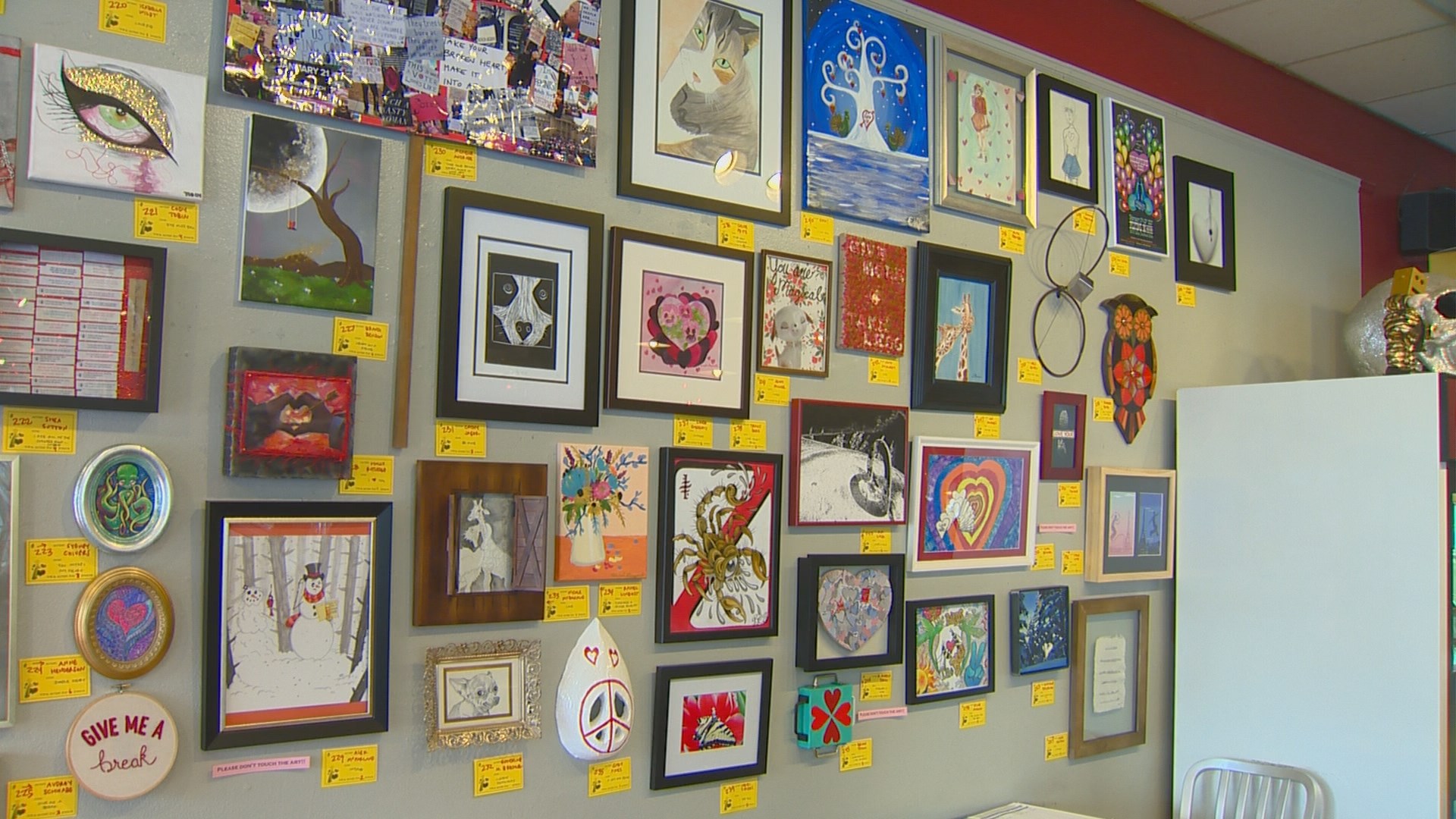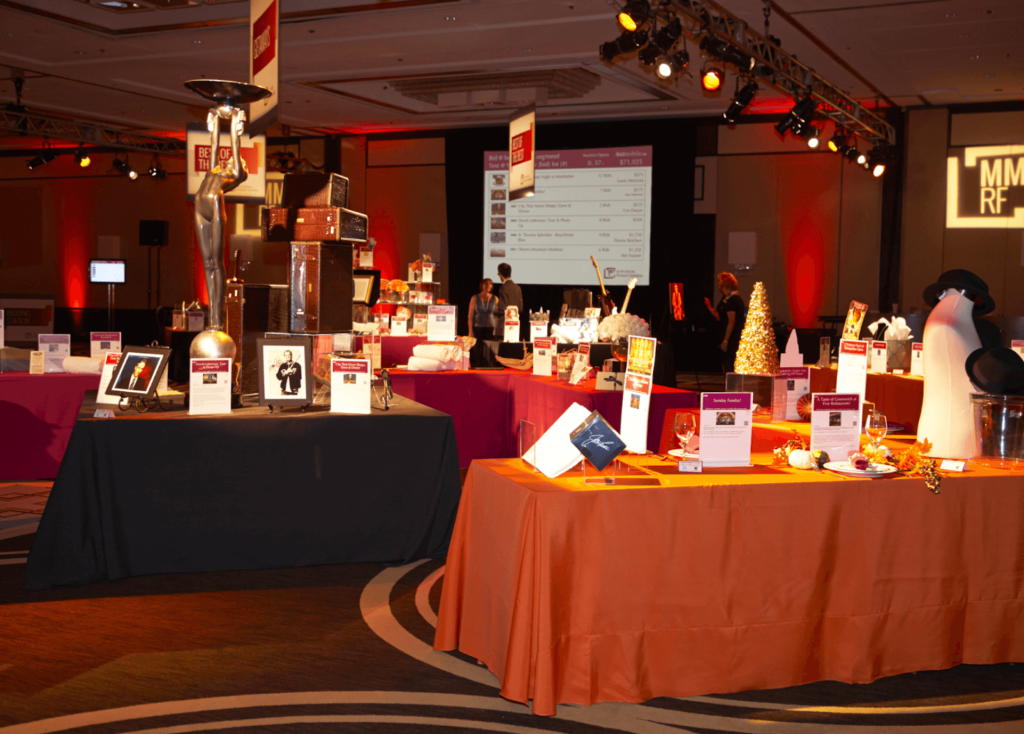Silent Auctions for Art Galleries: Proven Tips to Stand Out

- What is a Silent Auction for Artwork Galleries?
- What Is a Silent Auction for Artwork Gallery & How to Set the Starting Bid
- Gift Cards at an Art Auction? Yes, But Make Them Look the Part
- Are Silent Auction Purchases Tax Deductible?
- What Is a Silent Auction for Artwork Gallery, and Is It Legal?
- Going Online? Here’s How to Pull Off a Silent Auction Without the Physical Setup
- What Is a Silent Auction for Artwork Gallery and Where Do You Get Auction Items?
- Before You Go: Tips on What Is a Silent Auction for Artwork Gallery
- Final Thoughts
You’ve probably been to one of those art events where people mingle with a drink in one hand and a bidding pen in the other. Quietly scribbling down numbers, glancing over their shoulder while pretending they’re not watching the same painting. Yep, that’s a silent auction. And when done right? It can bring in solid money for your gallery without making things too formal or flashy. So, what is a silent auction for artwork gallery hosts and visitors alike? It’s a laid-back but effective way to let patrons place anonymous bids on displayed art—usually by writing on a sheet next to the piece—encouraging both competition and intrigue.
Let’s unpack everything you need to know, from starting bids to tax questions, legal stuff, and even how to make gift cards look like VIPs on your auction table. We’ll also chat about how online auction softwares like Ultimate Auction can make the whole thing easy without taking up the tech headaches yourself.
What is a Silent Auction for Artwork Galleries?
A silent auction is a type of fundraising event where participants place their bids without any live announcements. Instead of shouting or raising paddles, guests walk around the gallery, view the displayed items, and write down their bids on a bid sheet placed near each item. These days, many galleries are also going digital with the help of auction marketplace software so that the guests can bid directly from their smartphones.
Why do silent auctions work so well for art galleries? Because they let the artwork do the talking. It’s not just about raising money. It’s about giving people time to appreciate the pieces. Guests can take their time, circle back to items that caught their eye, and bid without pressure. This relaxed format is great for art lovers who don’t want to be in a fast-paced or shouty environment.
Another reason is community engagement. People feel more involved when they participate and the auction benefits local artists. The event becomes more than just a sale. It’s an experience that creates a buzz. And let’s be honest, people love a good competition, even if it’s silent.
Silent auctions can also attract first-time buyers. They may not be ready to splurge thousands on a painting through a private sale, but put them in a friendly setting with wine, music, and an opening bid of $300? They might just jump in. That’s how you build new relationships and turn guests into collectors.
Special Offer – Limited Time Only!
Rev Up Your Savings: Get 10% off Essential Ultimate Auction Software!
Fill the form and receive directly to your mailbox a discount code.
"*" indicates required fields
What Is a Silent Auction for Artwork Gallery & How to Set the Starting Bid
Setting the right starting bid is one of those things that sounds simple but it can really affect how your auction performs. Too low and you risk undervaluing the piece. Too high and you scare away potential bidders before the first glass of wine is finished.
So how do you find the sweet spot? A common rule of thumb is to set the starting bid at 30% to 50% of the artwork’s fair market value. If a piece is worth $2,000, a starting bid of $600 to $1,000 makes sense. This range attracts interest while still respecting the value of the art. It creates room for the price to climb but doesn’t start so low that it feels like a yard sale.
Bid increments matter too. These are the minimum bids you can use to exceed the one which is currently going on. Usually, increments are around 10% of the item’s value but you can adjust based on the item type and expected demand. Having clear increments prevents people from outbidding each other by just a few bucks which can drag the whole process down.
One last thing. Always display the starting bid clearly on each item’s card or online page. Bidders should know exactly where the auction begins. Transparency builds trust and trust gets bids.
Gift Cards at an Art Auction? Yes, But Make Them Look the Part

Gift cards may not be the main attraction at your art gallery event but don’t underestimate their value. They’re easy to source (often donated), flexible for bidders, and they fill out your auction table with variety. People who aren’t ready to drop big money on a painting might be more inclined to bid on a dinner for two or a weekend spa visit.
But here’s the deal. Presentation is everything. A plain envelope won’t draw much attention. You’ve got to make the gift card feel like an experience. Display it with props that tell a story. A spa card? Add a soft towel, a couple of candles, maybe even a lavender sachet. A restaurant voucher? Set it beside a wine glass and a faux menu. Make it look and feel like a little window into the experience the bidder will have.
Framing the card or placing it on a decorative stand can also help it stand out. And don’t forget to include a printed description with all the details like the value, expiration date, and what’s included.
If you have multiple gift cards, consider something fun like a gift card tree or a themed basket. It makes your display more inviting and gives people more to talk about.
Gift cards also translate well online. Just make sure your images are clear and your descriptions are complete.
In short, treat gift cards with the same attention you give the art. Package them well and they’ll surprise you with how much they raise.
Are Silent Auction Purchases Tax Deductible?
Most people assume that buying something at a silent auction means they can write it off as a donation. That’s not always the case. If the bidder receives a tangible item (like artwork or a gift card), then technically they made a purchase not a donation.
That said, there is one scenario where a tax deduction can apply. If someone pays more than the item’s fair market value, the amount above that value might count as a donation. For example, if a painting is worth $1,200 and someone wins it for $1,500, the extra $300 could be tax-deductible. But this only works if your gallery is a registered nonprofit and the buyer gets a proper receipt.
So your job as the organizer is to be transparent. List each item’s fair market value and sale price, issue receipts that show the difference, and clarify which part (if any) is deductible.
Also worth noting. People who donate items to your auction may be eligible for a deduction too. For example, a local artist donating a painting could potentially claim the cost of materials. It’s always best to encourage donors to consult their tax advisor.
And don’t forget. Some states or countries have different rules. If you’re in doubt, it might be worth chatting with an accountant familiar with nonprofit events. It’s better to get the fine print right than to guess.
What Is a Silent Auction for Artwork Gallery, and Is It Legal?
You bet it is. Silent auctions are a well-accepted way to raise funds and they fall under normal business laws for selling goods. Unlike raffles or lotteries, auctions aren’t considered gambling because there’s no element of chance. The highest bidder wins, plain and simple.
That said, depending on where your gallery is located, there might be a few hoops to jump through. If you’re a registered nonprofit, you might need to file notice or get permission to hold a fundraising event. Some states or cities require charities to register before asking for donations publicly.
Also, while most places don’t require an auctioneer license for a silent auction, it never hurts to check. Some regions have old rules on the books that could apply to art sales over a certain value.
And let’s not forget sales tax. In many cases, if you’re selling items (even at auction), you may be expected to collect tax unless your organization has a sales tax exemption. Again, this varies widely by location.
Planning to serve alcohol at your event? Then make sure your gallery or event venue has the right licenses. No one wants to get in trouble over a couple glasses of Pinot.
Bottom line, yes silent auctions are legal. But like anything else involving money, it pays to understand the rules. Talk to a legal advisor or accountant who understands nonprofit compliance and event laws in your area. Once you’ve got the green light, you can focus on the fun stuff like getting the bids rolling.
Going Online? Here’s How to Pull Off a Silent Auction Without the Physical Setup
Online silent auctions are a game changer. You reach more people, it’s easier to manage, and no one has to hover over a bid sheet all night.
Use an online auction software to:
- Build a simple auction site branded to your gallery
- List each piece with photos, artist bios, descriptions, and starting bids
- Set bidding start and end times
- Let people place max bids and get alerts when outbid
- Collect payments directly after the auction ends
No fuss or paper as you go completely digital. No chasing down individual winners as the software takes care of it.
And here’s a tip: open the auction catalog a few days before the event. Let people browse. Build hype. Maybe even tease a few items on your Instagram with some behind-the-scenes stories.
Just because it’s online doesn’t mean it has to feel cold. Keep the spirit of your gallery front and center.
Build a beautiful auction site for your art gallery
Let your viewers place bids and increase your market presence today.

What Is a Silent Auction for Artwork Gallery and Where Do You Get Auction Items?
So, the golden question is where do all these auction-worthy pieces and gift cards come from?
You ask. Nicely. Repeatedly.
Start with:
- Artists who’ve exhibited in your gallery (many are happy to support with a piece)
- Local businesses (cafes, spas, boutique hotels) who’d benefit from exposure
- Board members or patrons with connections (that one member with the vineyard? Ask them)
- Your own network
When you ask, be specific: “Would you be open to donating a weekend stay or dinner for two?” is better than “Got anything we can use?”
And make it easy for them. Offer visibility in your catalog or a shoutout at the event. Most donors just want to be seen supporting the arts.
Special Offer – Limited Time Only!
Rev Up Your Savings: Get 10% off Essential Ultimate Auction Software!
Fill the form and receive directly to your mailbox a discount code.
"*" indicates required fields
Before You Go: Tips on What Is a Silent Auction for Artwork Gallery
- Timing matters. Don’t keep the auction open too long. A few hours or a few days (for online) is plenty. Any longer and interest fades.
- Announce last calls. Whether it’s on a mic or via email blast, let folks know when it’s almost over. That last 10-minute frenzy? That’s where the money is.
- No funny business. Make your rules clear: no bid retractions, no tie-breaking arguments. Post it. Stick to it.
Final Thoughts
Silent auctions are here to raise money by drawing people into your gallery in a new and relaxed way. They give guests a reason to slow down, engage with the art, and feel part of something.
If you’re running the whole thing manually, it can feel like a lot. Chasing bids, printing sheets, tracking who won what. But with auction software like Ultimate Auction, you don’t have to do it all yourself. You get real-time bidding updates, automatic increments, proxy bidding options, time-based auction control, and clear dashboards that show you what’s working. Plus, it’s flexible enough to handle everything from one-night events to weeklong online auctions.
So if you’re a gallery owner or manager who wants to run silent auctions, go for an auction marketplace software today.
Easily Manage Silent Auctions for Art Gallery with Our Software
Trusted by thousands of users to take the best deals on their art work. Try the demo today.

Frequently Asked Questions



